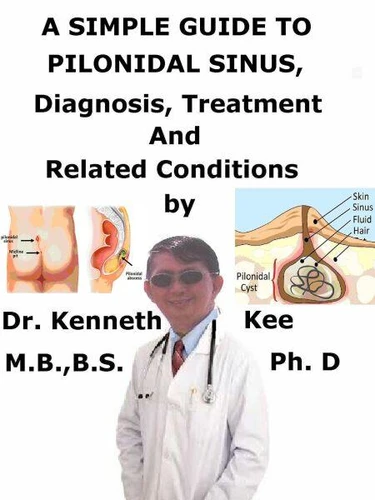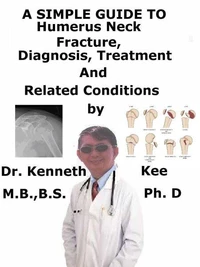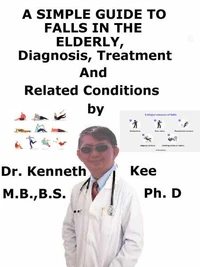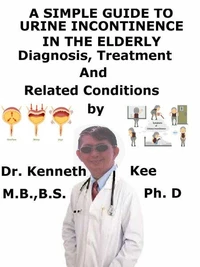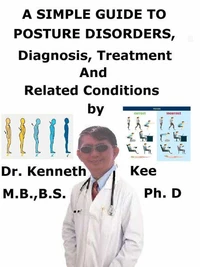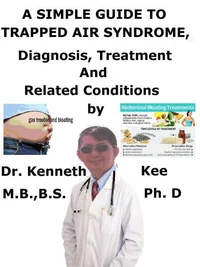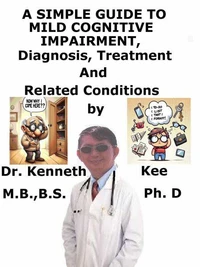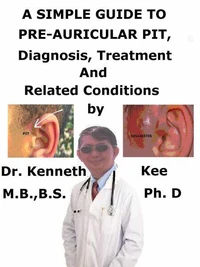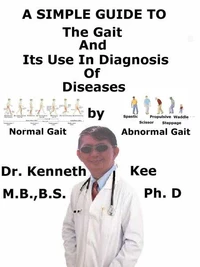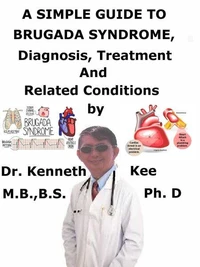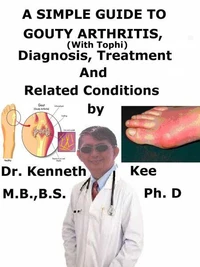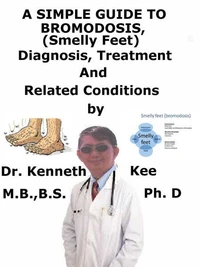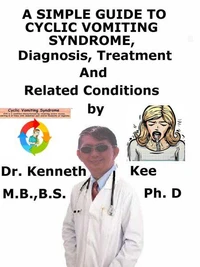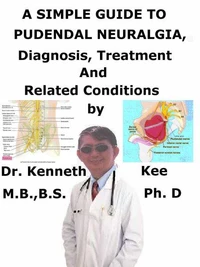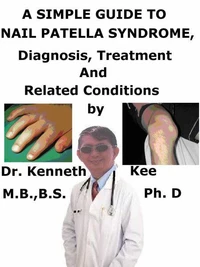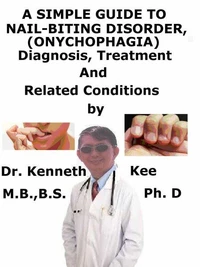A Simple Guide to Pilonidal Sinus, Diagnosis, Treatment and Related Conditions
Par :Formats :
Disponible dans votre compte client Decitre ou Furet du Nord dès validation de votre commande. Le format ePub est :
- Compatible avec une lecture sur My Vivlio (smartphone, tablette, ordinateur)
- Compatible avec une lecture sur liseuses Vivlio
- Pour les liseuses autres que Vivlio, vous devez utiliser le logiciel Adobe Digital Edition. Non compatible avec la lecture sur les liseuses Kindle, Remarkable et Sony
 , qui est-ce ?
, qui est-ce ?Notre partenaire de plateforme de lecture numérique où vous retrouverez l'ensemble de vos ebooks gratuitement
Pour en savoir plus sur nos ebooks, consultez notre aide en ligne ici
- FormatePub
- ISBN8215170038
- EAN9798215170038
- Date de parution11/07/2023
- Protection num.pas de protection
- Infos supplémentairesepub
- ÉditeurWMG Publishing
Résumé
This book describes Pilonidal Sinus, Diagnosis and Treatment and Related DiseasesLast month I have a slightly obese young man who is working past-time in the community center teaching old and senior people how to use their mobile phones and studying in the university. Due to his work and study he had to sit down for long periods. Because of his prolonged sitting and obesity he developed an infected swelling (abscess possibly developing from a pilonidal sinus) on the right side of the cleft of his buttocks.
He was treated with oral antibiotics and antibiotic cream with improvement but the infection recurred within a few days. I advised him to consult a surgeon for removal of the suspected pilonidal infected cyst or sinus which may require him to stop working or studying for at least 2 to 3 weeks. He is reluctant as this will interfere with his work and studies. Pilonidal sinus, also known as pilonidal cyst, is a disorder characterized by the formation of a small tunnel or cavity in the skin near the tailbonePilonidal sinus happens in the area at the top of the buttocks in its cleft and contains dirt and hair; hence the name pilonidal ("pilus" for hair and "nidal" for nest).
Hairs contain bacteria that can produce inflammation and infection. When pilonidal sinus becomes infected a pilonidal abscess may form and can cause acute pain. The infected pilonidal sinus is red, painful and may seep out blood and pus with a foul smellThe symptoms of infected pilonidal sinus can develop rapidly, often over a few days. Pilonidal sinus does not always produce symptoms and only needs treatment if it becomes infected.
Most patients with a pilonidal sinus will not notice it unless it produces symptoms. It is believed that hair pierces into the subcutaneous tissues through dilated hair follicles which are believed to happen especially in late adolescence (changing hormones and hair growth). Activities which produce friction, such as sitting for prolonged periods of time or friction from clothes, induces the hair growth in the cleft of the buttocks to dig back beneath the skin.
This embedded hair is regarded as a foreign matter by the body activating an immune response and causing the development of cavity, connected to the surface of the skin by a sinus tract. This inflammation from the immune response blocks the opening of the follicle which travels inwards, forming a 'pit'These pits will often passes out serous fluid and can occasionally become acutely infected to form a pilonidal abscess.
Debris or dirt may accumulate in this pit followed by formation of a sinus with a short tract, Other factors are:MaleA family history of pilonidal diseaseA history of trauma or irritation in the areaYounger persons as pilonidal sinus is more frequent in young adultsLocal irritation (buttock friction, increased sweating)The purpose of non-surgical medical therapy of pilonidal sinus is to remove hair and debris that may cause a chronic inflammatory state that keeps any possible skin tracts open.
Mild pilonidal sinus improves with washing with mild soap and hair removal. Pilonidal abscess may be treated with antibiotics and phenol injectionSurgery is the most reliable method to remove the pilonidal sinus and pouches of infection such as:Incision and drainagePit pickingSurgical excisionWide excision and open healingExcision and wound closure togetherWith proper treatment, most cases heal well.
TABLE OF CONTENTIntroductionChapter 1 Pilonidal SinusChapter 2 CauseChapter 3 SymptomsChapter 4 DiagnosisChapter 5 TreatmentChapter 6 PrognosisChapter 7 Anal Abscess and FistulaChapter 8 Anal FissureEpilogue
He was treated with oral antibiotics and antibiotic cream with improvement but the infection recurred within a few days. I advised him to consult a surgeon for removal of the suspected pilonidal infected cyst or sinus which may require him to stop working or studying for at least 2 to 3 weeks. He is reluctant as this will interfere with his work and studies. Pilonidal sinus, also known as pilonidal cyst, is a disorder characterized by the formation of a small tunnel or cavity in the skin near the tailbonePilonidal sinus happens in the area at the top of the buttocks in its cleft and contains dirt and hair; hence the name pilonidal ("pilus" for hair and "nidal" for nest).
Hairs contain bacteria that can produce inflammation and infection. When pilonidal sinus becomes infected a pilonidal abscess may form and can cause acute pain. The infected pilonidal sinus is red, painful and may seep out blood and pus with a foul smellThe symptoms of infected pilonidal sinus can develop rapidly, often over a few days. Pilonidal sinus does not always produce symptoms and only needs treatment if it becomes infected.
Most patients with a pilonidal sinus will not notice it unless it produces symptoms. It is believed that hair pierces into the subcutaneous tissues through dilated hair follicles which are believed to happen especially in late adolescence (changing hormones and hair growth). Activities which produce friction, such as sitting for prolonged periods of time or friction from clothes, induces the hair growth in the cleft of the buttocks to dig back beneath the skin.
This embedded hair is regarded as a foreign matter by the body activating an immune response and causing the development of cavity, connected to the surface of the skin by a sinus tract. This inflammation from the immune response blocks the opening of the follicle which travels inwards, forming a 'pit'These pits will often passes out serous fluid and can occasionally become acutely infected to form a pilonidal abscess.
Debris or dirt may accumulate in this pit followed by formation of a sinus with a short tract, Other factors are:MaleA family history of pilonidal diseaseA history of trauma or irritation in the areaYounger persons as pilonidal sinus is more frequent in young adultsLocal irritation (buttock friction, increased sweating)The purpose of non-surgical medical therapy of pilonidal sinus is to remove hair and debris that may cause a chronic inflammatory state that keeps any possible skin tracts open.
Mild pilonidal sinus improves with washing with mild soap and hair removal. Pilonidal abscess may be treated with antibiotics and phenol injectionSurgery is the most reliable method to remove the pilonidal sinus and pouches of infection such as:Incision and drainagePit pickingSurgical excisionWide excision and open healingExcision and wound closure togetherWith proper treatment, most cases heal well.
TABLE OF CONTENTIntroductionChapter 1 Pilonidal SinusChapter 2 CauseChapter 3 SymptomsChapter 4 DiagnosisChapter 5 TreatmentChapter 6 PrognosisChapter 7 Anal Abscess and FistulaChapter 8 Anal FissureEpilogue
This book describes Pilonidal Sinus, Diagnosis and Treatment and Related DiseasesLast month I have a slightly obese young man who is working past-time in the community center teaching old and senior people how to use their mobile phones and studying in the university. Due to his work and study he had to sit down for long periods. Because of his prolonged sitting and obesity he developed an infected swelling (abscess possibly developing from a pilonidal sinus) on the right side of the cleft of his buttocks.
He was treated with oral antibiotics and antibiotic cream with improvement but the infection recurred within a few days. I advised him to consult a surgeon for removal of the suspected pilonidal infected cyst or sinus which may require him to stop working or studying for at least 2 to 3 weeks. He is reluctant as this will interfere with his work and studies. Pilonidal sinus, also known as pilonidal cyst, is a disorder characterized by the formation of a small tunnel or cavity in the skin near the tailbonePilonidal sinus happens in the area at the top of the buttocks in its cleft and contains dirt and hair; hence the name pilonidal ("pilus" for hair and "nidal" for nest).
Hairs contain bacteria that can produce inflammation and infection. When pilonidal sinus becomes infected a pilonidal abscess may form and can cause acute pain. The infected pilonidal sinus is red, painful and may seep out blood and pus with a foul smellThe symptoms of infected pilonidal sinus can develop rapidly, often over a few days. Pilonidal sinus does not always produce symptoms and only needs treatment if it becomes infected.
Most patients with a pilonidal sinus will not notice it unless it produces symptoms. It is believed that hair pierces into the subcutaneous tissues through dilated hair follicles which are believed to happen especially in late adolescence (changing hormones and hair growth). Activities which produce friction, such as sitting for prolonged periods of time or friction from clothes, induces the hair growth in the cleft of the buttocks to dig back beneath the skin.
This embedded hair is regarded as a foreign matter by the body activating an immune response and causing the development of cavity, connected to the surface of the skin by a sinus tract. This inflammation from the immune response blocks the opening of the follicle which travels inwards, forming a 'pit'These pits will often passes out serous fluid and can occasionally become acutely infected to form a pilonidal abscess.
Debris or dirt may accumulate in this pit followed by formation of a sinus with a short tract, Other factors are:MaleA family history of pilonidal diseaseA history of trauma or irritation in the areaYounger persons as pilonidal sinus is more frequent in young adultsLocal irritation (buttock friction, increased sweating)The purpose of non-surgical medical therapy of pilonidal sinus is to remove hair and debris that may cause a chronic inflammatory state that keeps any possible skin tracts open.
Mild pilonidal sinus improves with washing with mild soap and hair removal. Pilonidal abscess may be treated with antibiotics and phenol injectionSurgery is the most reliable method to remove the pilonidal sinus and pouches of infection such as:Incision and drainagePit pickingSurgical excisionWide excision and open healingExcision and wound closure togetherWith proper treatment, most cases heal well.
TABLE OF CONTENTIntroductionChapter 1 Pilonidal SinusChapter 2 CauseChapter 3 SymptomsChapter 4 DiagnosisChapter 5 TreatmentChapter 6 PrognosisChapter 7 Anal Abscess and FistulaChapter 8 Anal FissureEpilogue
He was treated with oral antibiotics and antibiotic cream with improvement but the infection recurred within a few days. I advised him to consult a surgeon for removal of the suspected pilonidal infected cyst or sinus which may require him to stop working or studying for at least 2 to 3 weeks. He is reluctant as this will interfere with his work and studies. Pilonidal sinus, also known as pilonidal cyst, is a disorder characterized by the formation of a small tunnel or cavity in the skin near the tailbonePilonidal sinus happens in the area at the top of the buttocks in its cleft and contains dirt and hair; hence the name pilonidal ("pilus" for hair and "nidal" for nest).
Hairs contain bacteria that can produce inflammation and infection. When pilonidal sinus becomes infected a pilonidal abscess may form and can cause acute pain. The infected pilonidal sinus is red, painful and may seep out blood and pus with a foul smellThe symptoms of infected pilonidal sinus can develop rapidly, often over a few days. Pilonidal sinus does not always produce symptoms and only needs treatment if it becomes infected.
Most patients with a pilonidal sinus will not notice it unless it produces symptoms. It is believed that hair pierces into the subcutaneous tissues through dilated hair follicles which are believed to happen especially in late adolescence (changing hormones and hair growth). Activities which produce friction, such as sitting for prolonged periods of time or friction from clothes, induces the hair growth in the cleft of the buttocks to dig back beneath the skin.
This embedded hair is regarded as a foreign matter by the body activating an immune response and causing the development of cavity, connected to the surface of the skin by a sinus tract. This inflammation from the immune response blocks the opening of the follicle which travels inwards, forming a 'pit'These pits will often passes out serous fluid and can occasionally become acutely infected to form a pilonidal abscess.
Debris or dirt may accumulate in this pit followed by formation of a sinus with a short tract, Other factors are:MaleA family history of pilonidal diseaseA history of trauma or irritation in the areaYounger persons as pilonidal sinus is more frequent in young adultsLocal irritation (buttock friction, increased sweating)The purpose of non-surgical medical therapy of pilonidal sinus is to remove hair and debris that may cause a chronic inflammatory state that keeps any possible skin tracts open.
Mild pilonidal sinus improves with washing with mild soap and hair removal. Pilonidal abscess may be treated with antibiotics and phenol injectionSurgery is the most reliable method to remove the pilonidal sinus and pouches of infection such as:Incision and drainagePit pickingSurgical excisionWide excision and open healingExcision and wound closure togetherWith proper treatment, most cases heal well.
TABLE OF CONTENTIntroductionChapter 1 Pilonidal SinusChapter 2 CauseChapter 3 SymptomsChapter 4 DiagnosisChapter 5 TreatmentChapter 6 PrognosisChapter 7 Anal Abscess and FistulaChapter 8 Anal FissureEpilogue

